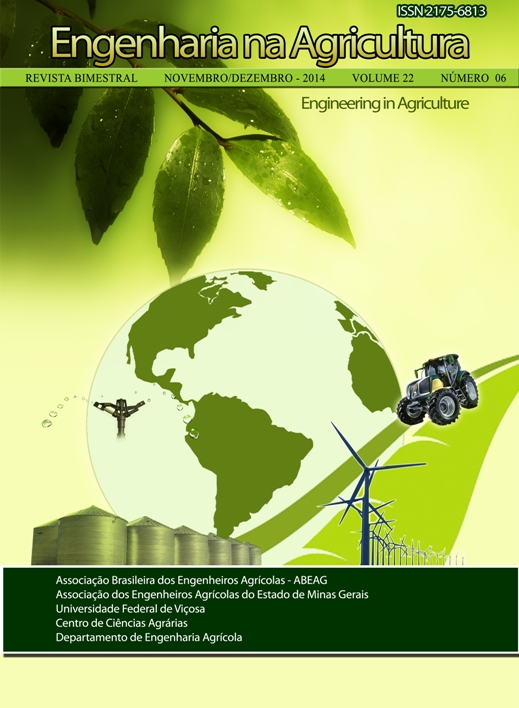COLIFORM BACTERIA DECAY IN PLANTED AND NON-PLANTED SOIL - DOI: 10.13083/1414-3984.v22n06a08
DOI:
https://doi.org/10.13083/reveng.v22i6.496Keywords:
Águas residuárias, fertirrigação, micro-organismos indicadoresAbstract
Fertigation is an alternative for the disposal/treatment of wastewater and provides the great advantage of potential application in agricultural use due to its contained nutrients. However, this practice can bring health risks, especially when using domestic sewage that has not undergone tertiary treatment. Factors such as temperature, UV rays, predation and competition can cause a great decay of exogenous microorganisms in the soil. The aim of this work was to monitor the survival and obtain the rate of decay of indicator organisms, total coliforms (TC) and fecal coliforms (FC - E. coli), after 32 days of applying raw sewage to planted and non-planted soil. The vegetation caused greater dispersion of bacteria in the soil, resulting in lower count 0-20 mm. A lower decay coefficient was observed for total coliforms than the E. coli. In the thirty-second day after sewage application, the E. coli count became insignificant in the planted and unplanted areas, estimating that they become negligible after 6.6 and 13.0 days, respectively, after application to the soil. Thus, the fertigation technique showed to be suitable for treatment/disposal of sewage with regard to the inactivation of pathogenic organisms.Downloads
Downloads
Published
How to Cite
Issue
Section
License
Authors who publish with this journal agree to the following terms:
The author(s) authorize(s) the publication of the text in the journal;
The author(s) ensure(s) that the contribution is original and unpublished and that it is not in the process of evaluation by another journal;
The journal is not responsible for the views, ideas and concepts presented in articles, and these are the sole responsibility of the author(s);
The publishers reserve the right to make textual adjustments and adapt texts to meet with publication standards.
From submission, the author is fully conceding the paper's patrimonial rights to the publication, but retaining the owner of its moral rights (authorship and paper's identification) according to Creative Commons Attribution-Noncommercial.








 Licensed by
Licensed by 